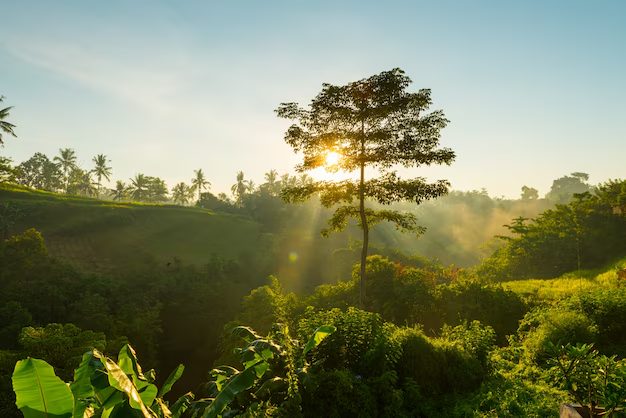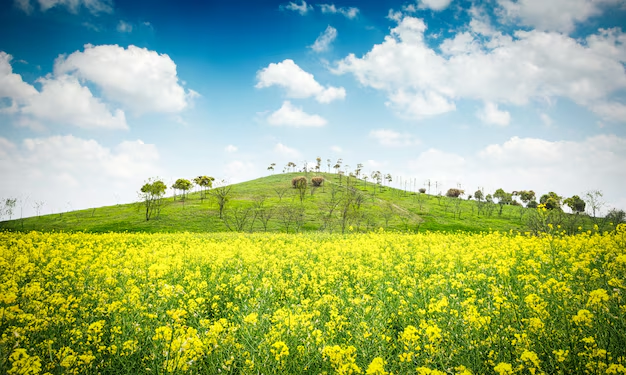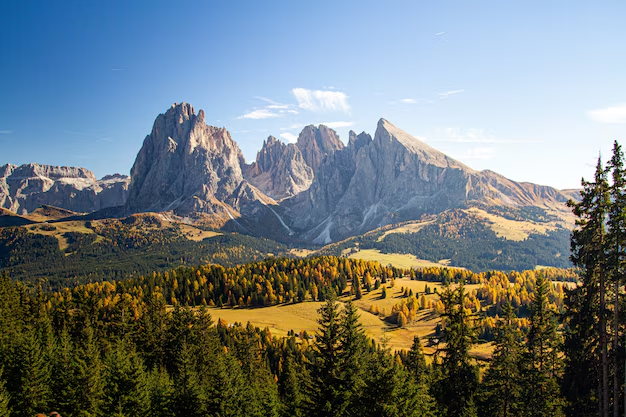Nature is an endless source of wonder, mystery, and discovery. From the towering trees of ancient forests to the deep, uncharted waters of the oceans, the natural world holds secrets waiting to be unveiled. These landscapes, teeming with life and beauty, are not only vital to the survival of the planet but also play a significant role in the balance of ecosystems. By exploring nature’s secrets—from the dense canopies of forests to the vast depths of oceans—we can uncover a deeper understanding of Earth’s intricate systems and the crucial need to protect them.
The Mysteries of the Forest
Forests are some of the oldest and most diverse ecosystems on the planet. The dense trees, lush vegetation, and hidden wildlife form a complex network that plays a vital role in maintaining Earth’s balance. The world’s rainforests, such as the Amazon, are often referred to as “the lungs of the Earth,” as they absorb carbon dioxide and release oxygen. The layers of the forest—from the forest floor to the towering canopy—house an incredible variety of flora and fauna, many of which are still undiscovered.
In the dense forests, life thrives in a multi-layered environment. In the canopy, birds, insects, and primates dart between branches, while beneath the forest floor, decomposers work tirelessly to break down organic material and nourish the soil. Forests also serve as a natural climate regulator, absorbing vast amounts of carbon and stabilizing weather patterns. However, deforestation poses a major threat to these critical environments, with widespread logging and agricultural expansion causing biodiversity loss and disrupting these intricate ecosystems.
Uncovering the Secrets of the Oceans
The oceans, covering more than 70% of the Earth’s surface, are another realm of nature teeming with secrets. Beneath the surface lies an entirely different world, filled with vibrant coral reefs, mysterious deep-sea creatures, and ecosystems that are still largely unexplored. Oceans are home to countless species, some of which have yet to be discovered. From the giant blue whale, the largest animal on Earth, to the tiny bioluminescent plankton that light up the night waters, the ocean is a wonderland of life.
The coral reefs, often referred to as the “rainforests of the sea,” are among the most diverse ecosystems on the planet. These colorful underwater cities provide shelter to thousands of marine species, from tiny fish to large predators. However, ocean ecosystems are under immense pressure from pollution, climate change, and overfishing. Coral reefs are particularly vulnerable to rising sea temperatures, which can cause bleaching and ultimately destroy these critical habitats.
In addition to their rich biodiversity, oceans play a key role in regulating the Earth’s climate. The oceans absorb heat, distribute nutrients, and regulate atmospheric temperatures. They also act as a carbon sink, absorbing a significant portion of the world’s carbon dioxide. Despite their importance, ocean ecosystems face numerous challenges, and protecting them is crucial for maintaining a stable and healthy planet.
The Connection Between Forests and Oceans
While forests and oceans may seem worlds apart, they are intricately connected. Forests help regulate water cycles, and healthy forests play a key role in stabilizing weather patterns that affect ocean climates. Rainforests, in particular, release vast amounts of moisture into the atmosphere, which helps drive ocean currents and influence precipitation patterns. Conversely, the health of the oceans impacts the climate and ecosystems on land. For example, rising sea temperatures and ocean acidification can disrupt weather patterns, affecting both terrestrial and marine life.
The importance of protecting both forests and oceans cannot be overstated. They are not isolated ecosystems; they are part of a larger global system that relies on the balance between land and sea. The impact of deforestation and ocean degradation ripples through this interconnected system, threatening both marine and terrestrial biodiversity.
The Role of Humans in Protecting Nature’s Secrets
Humans have a critical role in safeguarding the secrets of nature. From deforestation and pollution to climate change and overfishing, human activities have increasingly disrupted the delicate balance of Earth’s ecosystems. Yet, with knowledge and action, we can begin to protect and restore the natural world.
Preserving forests requires global efforts to reduce deforestation, protect existing habitats, and promote sustainable practices. Efforts to reforest areas that have been logged or destroyed can help restore biodiversity and combat climate change. In the oceans, reducing plastic pollution, combating overfishing, and protecting marine habitats like coral reefs are essential steps in preserving marine life. Additionally, addressing the impacts of climate change through global cooperation can mitigate the damage done to both forests and oceans.
7 Frequently Asked Questions About Nature’s Secrets
1. Why are forests considered the lungs of the Earth?
Forests are called the lungs of the Earth because they absorb carbon dioxide and release oxygen, playing a critical role in maintaining the planet’s atmosphere and climate.
2. What are coral reefs, and why are they important?
Coral reefs are underwater ecosystems formed by colonies of tiny marine animals. They provide shelter to a diverse range of species, support marine biodiversity, and protect coastlines from erosion.
3. What is ocean acidification?
Ocean acidification occurs when the oceans absorb excess carbon dioxide from the atmosphere, which lowers the pH of seawater and can harm marine life, particularly organisms with calcium carbonate shells or skeletons.
4. How do forests and oceans help regulate climate?
Forests and oceans regulate climate by absorbing carbon dioxide, distributing heat, and influencing weather patterns. Healthy ecosystems in both realms help stabilize the Earth’s climate.
5. Why are oceans so important for biodiversity?
Oceans are home to more than 70% of the Earth’s biodiversity. Marine ecosystems, such as coral reefs and kelp forests, support a vast array of species, many of which are critical to global food webs.
6. What can I do to help protect forests and oceans?
You can support conservation efforts, reduce your carbon footprint, avoid single-use plastics, and advocate for sustainable practices in your community and beyond. Supporting policies that protect forests and oceans is crucial.
7. What is the connection between deforestation and climate change?
Deforestation contributes to climate change by releasing large amounts of stored carbon dioxide from trees into the atmosphere. Forests act as carbon sinks, and their loss exacerbates global warming.
Conclusion
Nature’s secrets—from the life-filled forests to the vast, unexplored oceans—are essential to the balance of our planet. These ecosystems are intricately connected, and their health is vital to the survival of life on Earth. By understanding the critical role that forests and oceans play, we can work to protect and preserve them for future generations. Nature’s wonders are not just beautiful to behold—they are essential to our survival.
Key Takeaways
- Forests and oceans are two of Earth’s most important ecosystems, playing crucial roles in regulating climate and supporting biodiversity.
- The health of forests and oceans is interconnected, and their protection is vital for the overall balance of the planet.
- Human activities such as deforestation, pollution, and overfishing threaten these ecosystems, but there are ways we can mitigate their damage.
- Protecting nature’s secrets requires global cooperation, sustainable practices, and continued efforts to restore and preserve the world’s forests and oceans.
- By understanding and respecting the role of nature in maintaining life on Earth, we can ensure a healthier, more sustainable planet for future generations.




